The Open Championship returns to Royal Troon this year for the first time since that between Henrik Stenson and Phil Mickelson. Ultimately, the Swede won that day, but as one colleague likes to say, "the real winner that day was the game of golf." You can expect there to be plenty of reminiscing about that week—as well as the usual amount of talk. So if you're playing a drinking game involving those things while watching this year's coverage, be careful.
Make no mistake, however, there is history at all the courses that the R&A plays the Open at. While St. Andrews might be the most familiar, it's has rivals in terms of charm, tradition and novelty. This is probably a good time to take a refresher course on not just St. Andrews but all the current Open venues. The return of Royal Portrush, which hosted in 2019 and will again in 2025, makes it an even 10 tracks in the rota now. That’s a full album so it’s understandable if you get your Royals and your Links mixed up. Hopefully, then this handy guide helps.
RELATED: 11 Open Championship terms you need to know
Old Course at St. Andrews

Harry How
Where: St Andrews, Scotland
Times hosting: 29 (last in 2022)
You know it as: “The Home of Golf.” There’s not much more to say than that. We’re guessing you don’t get this one mixed up.
Unique features: The “Road Hole” (above), on which a road and a hotel come into play; Swilcan Bridge (think Jack Nicklaus waving goodbye); Hell Bunker, large double greens, Valley of Sin, etc.
Noteworthy moments: This course has so much history that five players (Bob Martin, J.H. Taylor, James Braid, Jack Nicklaus and Tiger Woods) have won two Open titles there. None were more impressive than Woods’ eight-shot romp in 2000, though, when his 19-under-par total set a major championship record. Five years later, Woods would win again here during a week that also saw Jack Nicklaus play in his final major.
• • •
Royal Troon

Stuart Franklin
Where: Troon, South Ayrshire, Scotland
Times hosting: 9 (last in 2016)
You know it as: “That place with the ‘Postage Stamp’ green.”
Unique features: Has both the shortest (the par-3 eighth “Postage Stamp,” pictured above) and longest (par-5 sixth “Turnberry”) holes in the Open rota; Colin Montgomerie played here often during summers growing up in his native Scotland; his dad was the club’s secretary and his house was just a half mile down the road. That local knowledge, however, never translated into a win.
Noteworthy moments: In 1973, Tom Weiskopf won his lone major championship at Troon by holding off Johnny Miller and Jack Nicklaus. Todd Hamilton and the hybrid that he used to get up-and-down 13 of 14 times shocked Ernie Els in a 2004 playoff victory. And in 2016, this generation’s “Duel in the Sun” (except it was more like the “Duel in the Gloom”) took place between . The Swede wound up breaking Woods’ Open scoring record and winning by three over Mickelson, who finished 11(!) shots ahead of third place.
• • •
More Open Championship Preview stories
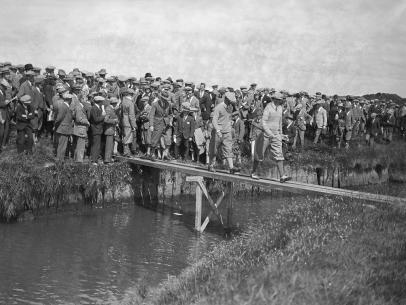 Open Championship preview
The mystery behind Prestwick's disappearance from the Open rota
Open Championship preview
The mystery behind Prestwick's disappearance from the Open rota
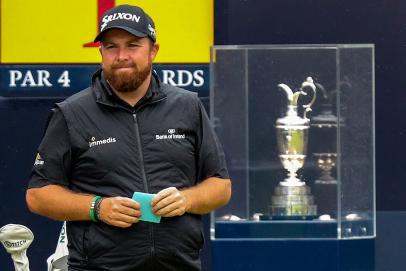 Open Championship Ranking
The 13 best bets to win at the Old Course in St. Andrews
Open Championship Ranking
The 13 best bets to win at the Old Course in St. Andrews
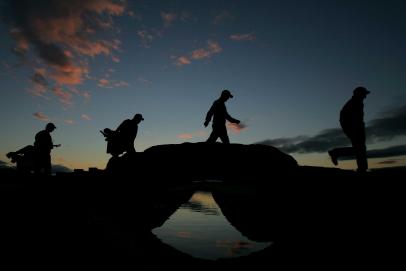 Open Championship Preview
Caddie tales from the Old Course: The good, the bad and the bizarre
Open Championship Preview
Caddie tales from the Old Course: The good, the bad and the bizarre
Royal Liverpool (Hoylake)

Ross Kinnaird
Where: Merseyside, England
Times hosting: 12 (last in 2014)
You know it as: “That place where Tiger Woods cried.”
Unique features: A short drive from Liverpool’s Penny Lane of Beatles fame; site of first team competition between Great Britain and the U.S. in 1921, an event that became known as the Walker Cup the following year.
Noteworthy moments: In 2006, Tiger Woods (above) won the British Open just two months after his father passed away. He accomplished the feat by only using his driver once all week. The previous time Hoylake hosted the Open—39 years before—Roberto De Vicenzo managed to sign a correct scorecard to claim his lone major title. Most recently, Rory McIlroy won the title there in 2014.
RELATED: The best of the Open rota—the most intriguing (and sometimes bizarre) quirks of the rota courses
• • •
Royal Birkdale
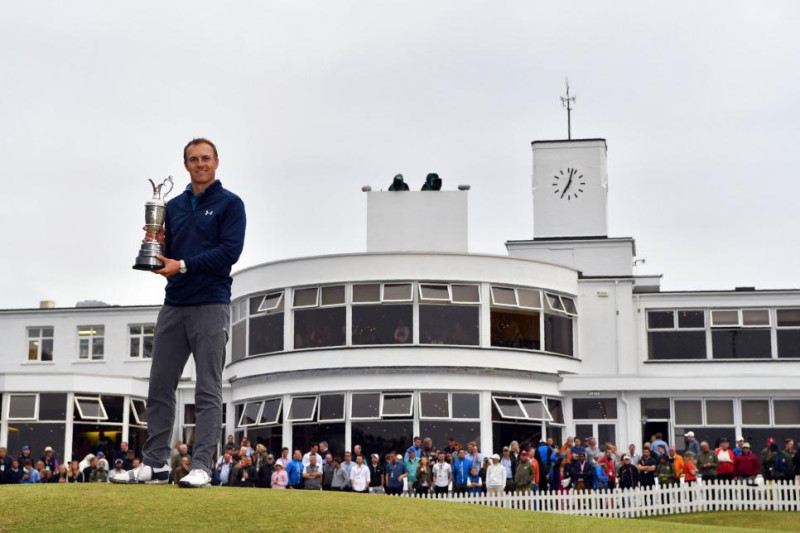
AFP Contributor
Where: Southport, England
Times hosting: 10 (last in 2017; next in 2026)
You know it as: “That place with the wacky clubhouse.”
Unique features: The art deco clubhouse (above) that was constructed in 1935; the tallest dunes in the Open rota, which isolate many of the holes from each other.
Noteworthy moments: In the 1969 Ryder Cup, Jack Nicklaus conceded a tricky short putt to Tony Jacklin so that the biennial competition would end in a tie. In 2008, Padraig Harrington became the first European since James Braid in 1906 to retain the claret jug. And in 2017, Jordan Spieth made the craziest bogey ever, then a few holes later pointed to caddie Michael Greller and yelled, “Go get that!” after making a 50-foot eagle on his way to victory. Wacky stuff happens here. But again, nothing is as wacky as the clubhouse.
• • •
Muirfield

Central Press
Where: Gullane, East Lothian, Scotland
Times hosting: 16 (last in 2013)
You know it as: “That course where Tiger shot an 81 in monsoon conditions to end his hope of capturing the calendar Grand Slam in 2002.”
Unique features: Home to the oldest organized golf club in the world, The Honourable Company of Edinburgh Golfers, whose records date back to 1744. In 2017, the club voted to allow women members, which put the old chaps back in the good graces of the R&A and ensured the course will host future Opens. Murifield also features a circular routing in which the front nine wraps around the back nine.
Noteworthy moments: Jack Nicklaus won his first of three Opens here in 1966 (above) and named his own course in Dublin, Ohio, Muirfield Village, after it. Muirfield was also the site of the 1892 Open, golf’s first four-round tournament. In 2013, Phil Mickelson shot one of the great final rounds ever (66 in tough conditions) to capture his first claret jug.
• • •
Royal Lytham & St. Annes
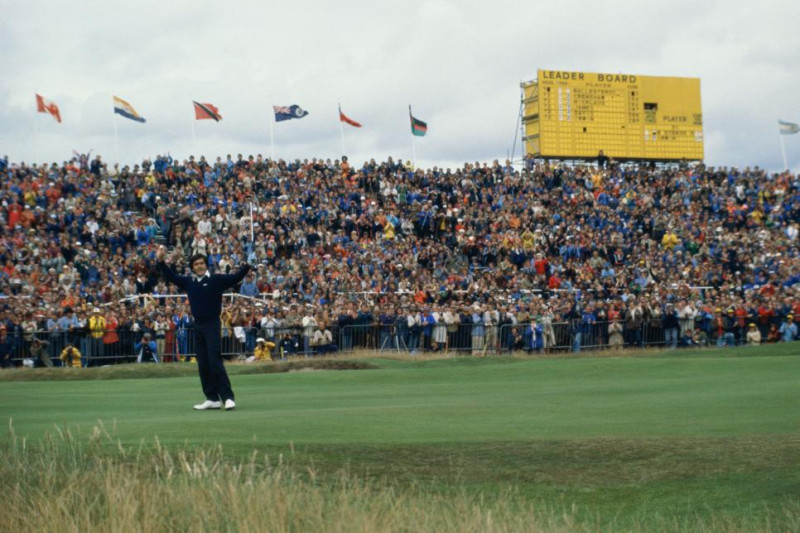
Steve Powell
Where: Lancashire, England
Times hosting: 11 (last in 2012)
You know it as: “That course with a lot of bunkers” (206 to be exact).
Unique features: Only Open course to start with a par 3; 206 bunkers; closes with six-straight par 4s.
Noteworthy moments: In 1979, Seve Ballesteros (above) deliberately drove his ball into a parking lot on the 16th hole and made birdie on his way to a three-shot victory over Jack Nicklaus. Ballesteros also would win the 1988 Open here. Bobby Jones won his first of three Opens here in 1926 and David Duval won his only major here in 2001.
• • •
Turnberry

Where: South Ayrshire, Scotland
Times hosting: 4 (last in 2009)
You know it as: “That scenic place Tom Watson really likes,” and now, “that British Open course Donald Trump owns.”
Unique features: Beautiful view of Ailsa Craig rock island, Turnberry Point Lighthouse.
Noteworthy moments: In 1977, Watson shot a pair of 65s over the weekend to beat Jack Nicklaus (above) by one stroke in what is known as the “Duel In The Sun.” Incredibly, Watson nearly won at Turnberry again 32 years later at age 59, losing to Stewart Cink in a playoff dubbed the “Duel that disappointed everyone other than Cink’s immediate family.”
• • •
More Open Championship Preview stories
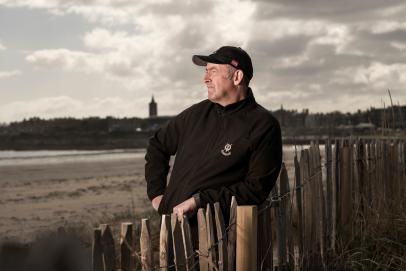 The Protector of the Old Course: Why the tenure of St. Andrews' ninth superintendent could be the most critical
The Protector of the Old Course: Why the tenure of St. Andrews' ninth superintendent could be the most critical
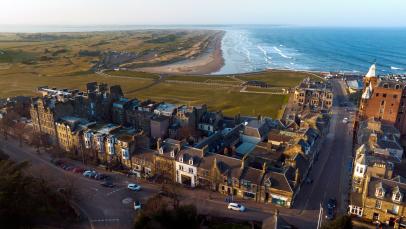 Open Championship 2022: Why the easy 18th at the Old Course is golf’s greatest finishing hole
Open Championship 2022: Why the easy 18th at the Old Course is golf’s greatest finishing hole
 British Open FAQ
Open Championship History: Everything you wanted to know about golf's oldest championship
British Open FAQ
Open Championship History: Everything you wanted to know about golf's oldest championship
Royal St. George’s

David Cannon
Where: Sandwich, Kent, England
Times hosting: 14 (last in 2021)
You know it as: “That place with the power plants towering in the horizon.” Lovely!
Unique feature: The fourth hole has the deepest bunker (above) in championship golf.
Noteworthy moments: RSG became the first course located outside of Scotland to host an Open in 1894. More than a century later, it was the site of one of the game’s most surprising wins when Ben Curtis—ranked 396th in the world—claimed the claret jug. A year ago, Collin Morikawa joined Curtis as just the fifth golfer since World War II to win the Open in his first start in the championship.
RELATED: The most unlikely winners in Open Championship history
• • •
Carnoustie
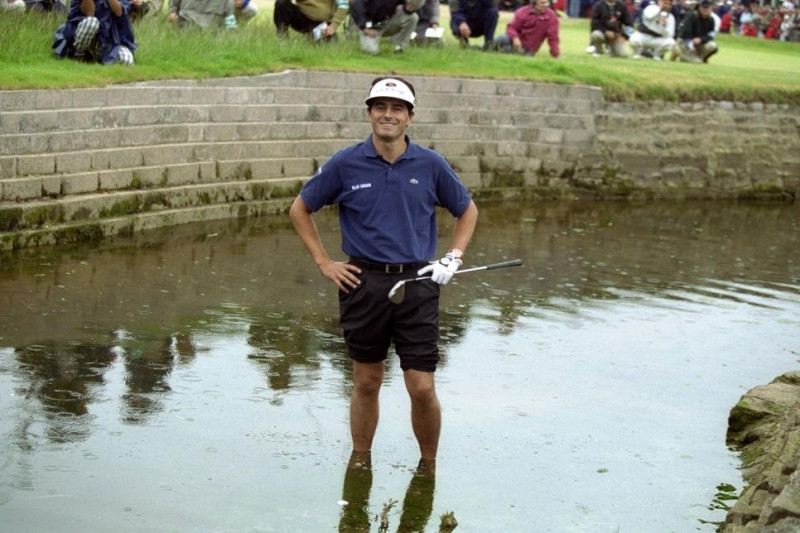
David Cannon
Where: Carnoustie, Scotland
Times hosting: 8 (last in 2018)
You know it as: “That place where Jean Van de Velde happened.”
Unique feature: Barry Burn, which meanders through the course.
Noteworthy moments: Dubbed “Car-nasty” in 1999 after three players qualified for a playoff at six over par. Of course, there wouldn’t have been any need for extra holes if Van de Velde hadn’t made a triple bogey on the 72nd hole. Eight years later, more drama happened on No. 18 when Padraig Harrington found Barry Burn twice and made a double bogey, but still got into a playoff he would win thanks to Sergio Garcia bogeying the same hole. There was no such carnage in 2018 when Francesco Molinari birdied the final hole to put away his first major.
• • •
Royal Portrush

David Cannon
Where: Portrush, Northern Ireland
Times hosting: 2 (last in 2019; next in 2025)
You know it as: “That place Rory McIlroy set the course record.” (61 when he was 16 years old) Of course, it's also "That place Rory McIlroy went OB on the first hole" on his way to missing the cut in 2019.
Unique feature: CALAMITY, which is the fantastic nickname of the long, uphill par-3 16th that plays over a ravine. There’s also plenty of danger on the uphill par-4 first hole, which has out-of-bounds stakes—down both sides. Grab your popcorn, folks!
Noteworthy moments: Max Faulkner won the first Open here in 1951 then it took 68 years for the R&A to return for a second time. Irishman Shane Lowry fitting winning the claret jug. While there is not specific date for another Open at Portrush, the R&A does consider it now the 10th course on the Open rota, so it’s safe to assume we’ll see another major here sooner than in the next 68 years.